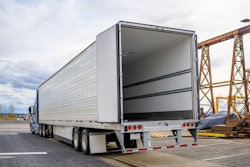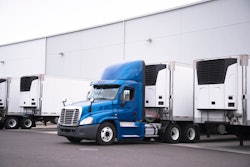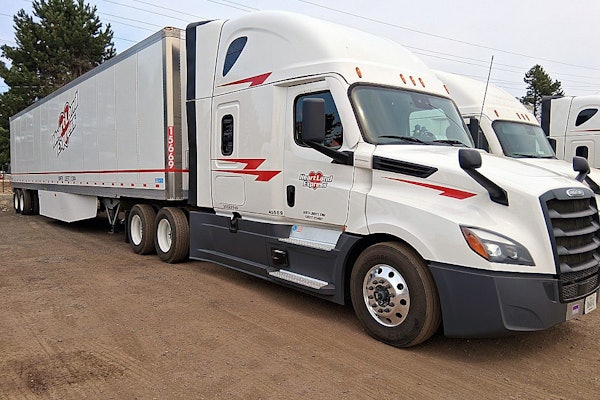The health of the used truck market is a pretty good indicator of trucking economics and good rates and volume generally lead to fleets trading in older units for newer ones. Very few people would characterize 2024 as a good year for trucking but many would agree that at least it’s been somewhat stable more recently. The same is true for the used truck market.
Contents of this video
00:00 10-44 intro
00:28 Used truck market
02:19 The pre- prebuy for 2025/26
04:21 Regional factors for used truck value
05:54 Truck capacity
08:37 Tariffs on imports
Speaker 1:
CCJs 10 44 is brought to you by Chevron Delo, heavy duty diesel engine oil. Now there's even more reasons to choose delo. The end of the year is here, so let's look back and ahead at the used commercial truck market. You're watching CCJs 10 44, a weekly episode that brings you the latest trucking industry news and updates from the editors of CCJ. Don't forget to subscribe and hit the bell for notifications so you'll never miss an installment of 10 44. Hey everybody, welcome back. I'm Jason Cannon, and my co-host is Matt Cole. The health of the used truck markets a pretty good indicator of trucking economics. Good rates and good volume generally lead fleets to trading in older units for newer ones, but timing the used market for either maximum value or the biggest bargain is tricky.
Speaker 2:
Very few people would characterize 2024 as a good year for trucking, but many would agree that it's at least been somewhat stable more recently. The same is true for the used truck market.
Speaker 3:
The beginning of 24, the first quarter saw some pretty steep depreciation continuing the trend that we saw in 23 coming off the covid bubble. Then that started to stabilize pretty dramatically going into the second quarter. So we went from five 6% depreciation in the beginning of the year back down to less than two in the current period, and that started to flatten out. Like I said, in the second quarter. I think values are kind of establishing a floor. At this point, we're still a little bit lower than we were this time last year, roughly six to 8% depending on whether you're looking at auction or retail values. So we still had some ground to make up from that Covid bubble on the downside, but we're just about at parody with where we were before Covid. In terms of looking at the last strong market, which was, let's call it 2018, late 2018, we're about 5% lower than that at auction, which is pretty good at retail. It's a little bit more than compared to the last week market in 2019. Pre covid we're about 40% higher at auction and about 25% higher at retail by historical standards. Values are strong. Of course, that doesn't take inflation into account. Anybody listening can do their own math on that. But in nominal numbers, at least the used truck market is performing better than it did last year, just in terms of direction.
Speaker 1:
Orders of new trucks is also stabilized, and now that the election is over, the pre pre-buy can officially get underway even with some political uncertainty as it relates to emissions.
Speaker 3:
We saw a nice bump just last month, November on orders. We're in the 26 model year build now. We saw the nice bump going into that model year. The build is okay, roughly 20,000 trucks per month, which is solid two shift build at the factories, which is great for OEMs, not the strongest we've had, but certainly not the weakest. So going into the pre-buy portion of 26, 25, 26, were in pretty solid footing. I think November in general was a relatively sluggish month just because of uncertainty around the election, which happens every four years. I think most people who studied this more than I do are kind of assuming more or less status quo with the biggest regulations like the 27 emissions in particular. I think the engine OEMs and the truck makers are too far down the road to reverse course on that at this point.
So any commentary along those lines seems logical to me. So I'm assuming that any pre-buy activity based on 27 emissions is going to remain in place. So like you said, that does mean there's going to be a pull ahead in new truck orders and deliveries with the associated increase in used truck inventory as those trucks, as the lightly used used trucks are traded in. So implications for the used truck market on that. Obviously, an influx of pull ahead trades is not good for used truck supply. That will have a negative impact on pricing. The exception is the newest used trucks that are available on the market in 2026, maybe late 25, we'll probably see a bump, and I'm talking 2-year-old trucks with less than two, 300,000 miles on 'em because they're a substitute for new trucks. But outside of that, a new truck pre-buy is generally a negative for the used truck market.
Speaker 2:
With a few exceptions. Newer trucks have always been worth more on the used market than older trucks, but with new emissions regulations from the EPA and CARB and the various states of the follow carb rules, Chris says there could also be a regional factor ahead in truck value. He tells us more after a word from 10 44 sponsor Chevron lubricants.
Speaker 4:
We serve customers from Birmingham, Alabama to the Gulf Coast, so our people in our trucks are booked solid all day. There is no slack in our schedules. These trucks can't break down. I choose an engine oil that takes care of the number one issue with our engines emissions, so we don't have to worry about DPF clogging. I choose the engine oil that keeps our trucks hauling. I choose Delos 600 a D.
Speaker 3:
The EV and the fossil fuel regulations also come into play where diesel trucks of a certain age are basically worthless in California because of the 10 year rule and things of that nature. So that's where we might see some change, and there will definitely be court fights based on that going forward. I have no doubt about that. I think the regionality plays a factor. If things were to remain as they are now, that 2018 truck would be perfectly fine going forward for most of the country. I think even in California, that's not a problem that truck at this point or going into 27, it's the outside of the diesel trucks, natural gas EVs where we're going to see the most major change under Trump compared to Biden. I think
Speaker 1:
Like most of the really important trucking numbers like rates, Chris says there is some positive momentum in the used truck market heading into 2025, driven in part by capacity right sizing,
Speaker 3:
Looking at truck capacity, which is basically the number of trucks on the ground that are ready to deliver freight. The forecast that the forecasting companies release look like a positive trend going into 25 and continuing mildly positive as 25 progresses. I think their assumptions are pretty much based on current environment, not necessarily any unforeseen changes that might happen. But yeah, talking about all the factors that impact new and used truck market activity, spot rates forecast to increase mildly to moderately going into 25 and throughout 25 contract similar and capacity utilization, same story increasing going into 25. So we should be, actually, I think we have seen an improvement starting a month or two ago already in most of those measures, freight focused measures. So if you trust the freight forecasting companies, it looks like 25 will be a better year than 24, and we're already on the upswing going into 25.
Used truck values are driven mainly by capacity utilization, truck availability, which is basically a shorthand for demand and supply going into 25. We could be in a strengthening market, call it late 17, early 18 feels right. Capacity is improving in terms of it affects the market, which means it's tightening and we'll continue to tighten because I think carriers have started to offload excess equipment that they were sitting on for a while. So that equipment has filtered through the marketplace and reduced their excess capacity, which is good for the freight environment. Also coming up, we've got immigration issues. There might be fewer drivers available. We've got potentially relaxed regulation, which could have the opposite effect in terms of drug testing and things like that under the Trump administration. So as far as the financing portion goes, I just have some qualitative feedback, and this is by no means authoritative or anything like that, so it's not official, but I mean, just casual conversations. I've heard part of what you mentioned is a lot of the financing companies have inventory on the books that they don't necessarily want to write off or might not find it financially feasible to write off all in the short term. So that could be one reason why some of these drivers who wouldn't otherwise still be in business are still in business. It's because the bank's finance companies haven't come calling for their loans just yet.
Speaker 2:
One major outlier that could impact the trucking market and the sale of new and used trucks is president-elect Trump's proposed tariffs on imports. There's more at stake here than just consumer goods too. While the major truck manufacturers all have assembly plants in the us, at least some of the components are imported.
Speaker 3:
We have to look historically at what tariffs did under his first administration because he did enact some pretty noticeable and impactful tariffs. Far from 100% of those increased costs were passed on to consumers for various reasons. Why combine that with we're not sure just yet how much of this is bluster versus how much is actual set policy. So far, all we know is what we've read in social media, and that's pretty far from actual written policy, so we'll have to see on the tariffs issue. I'm definitely not a DOR when it comes to that, but I do think there will be meaningful impacts from increased tariffs, both on imports and exports to overgeneralize a little bit. The smaller the component, the less cost effective it is to manufacture it in America. So big things like engines, yeah, we can make money doing that. Little things like bolts or very minor components that go into the engines, maybe not very cost effective to manufacture here.
Speaker 1:
That's it for this week's 10 44. You can read more on ccj digital.com. While you're there, sign up for our newsletter and stay up to date on the latest in trucking industry news and trends. If you have any questions or feedback, please let us know in the comments below. Don't forget to subscribe and hit the bell for notifications so you can catch us again next week.











